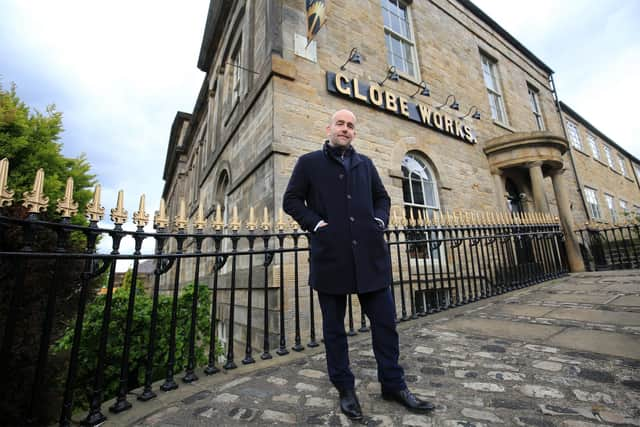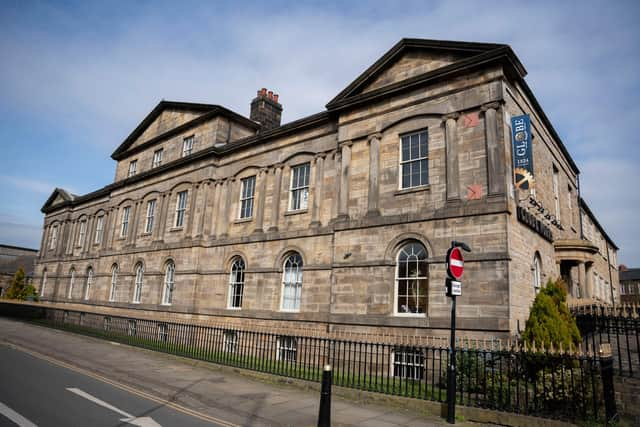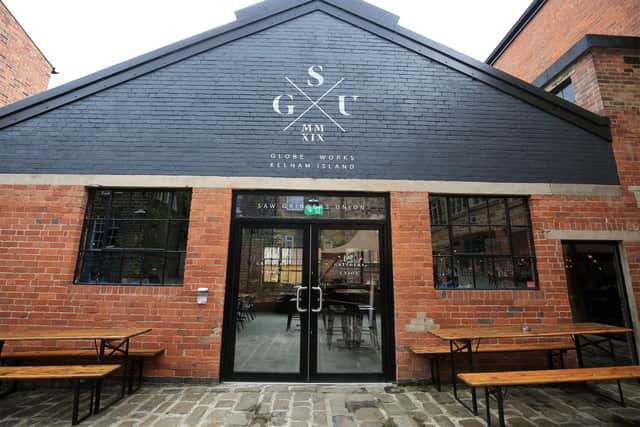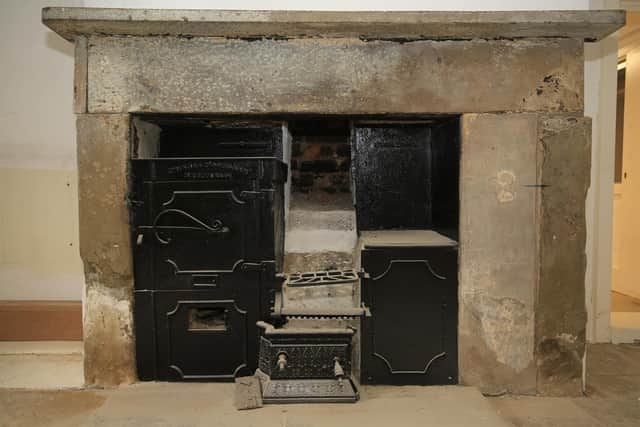Restorations - 200-year-old former cutlery works with a bright future is Sheffield in stone
and live on Freeview channel 276
Impressively designed and solidly built, the former cutlery factory has survived 200 years of often turbulent history, has a bright future - and breeds undying love.
Owner Matt Davison freely admits to being under its spell, describing himself as a mere ‘custodian’ and sinking ‘multi-millions’ into the Grade 2* listed building on Penistone Road in the hope it will last another two centuries.
Advertisement
Hide AdAdvertisement
Hide AdHe was bewitched during four years working there as a tenant and snapped it up when he had the chance in 2013.


“People like me are only custodians. I would love the building still to be there in 200 years, after I’ve helped it along. I want to leave it better than I found it, for the future of Sheffield ”
Globe Works was built in the 1820s by architects Henry and William Ibbotson for edge tool manufacturers Ibbotson & Roebank.
It is thought to be the oldest, most complete example of a purpose-built cutlery works in Sheffield. It is also one of only two palladian style buildings in the city, Matt says.
And it could so easily have been lost.


Advertisement
Hide AdAdvertisement
Hide AdIn the 1970s Sheffield City Council applied to have it de-listed so it could be demolished, to ‘straighten a kink in the road’, according to Matt.
In the authority’s defence, it was derelict at the time. But it was eventually saved and restored in a situation that has parallels today.
Only this week, the city council’s planning committee refused a bid to flatten the Georgian ‘Rare & Racy’ block on Devonshire Street. To paraphrase opponents of the plan: once it’s gone it’s gone, and who knows what the future might hold?
The works also has an important place in Sheffield’s long history of union activism and industrial unrest.


Advertisement
Hide AdAdvertisement
Hide AdIn the 1840s, the Saw Grinders Union objected to the installation of steam power to drive grinding wheels and attempted to blow up the recently-installed engine house, demolishing the chimney. A crack in the chimney breast bears witness to this day. More darkly, it is reported that a union member shot dead the works manager in the courtyard.
Matt said: “I don’t think people know that much about the Luddites of Sheffield. I bet they were tough guys to work alongside.”
The names of those involved appear to have been lost in time - but that could change.
He has hired heritage specialists Wessex Archaeology to research and write the definitive history of the building.


Advertisement
Hide AdAdvertisement
Hide AdThat could lead to the installation of plaques and signboards detailing its history, significant people and the many original features.
They include wooden cranes, pulley systems and a range on the ground floor used by servants to the Ibbotson family. Wooden sash windows at the front and ‘cutlery windows’ with little glass panes at the rear survive. They add to the aesthetics - and the cost of maintenance.
There are also impressive and beautifully painted railings at the front. The row guards against a drop into a ‘moat’ which is probably why they survived the widespread removal of railings for munitions in the Second World War.
Matt says he has just had approval to reinstate some which were removed.
Advertisement
Hide AdAdvertisement
Hide AdToday, Globe Works, is home to 25 firms, some 80 people, and is 90 per cent full. Most are small, some are start-ups and many are there because they like the building and it boosts their image, says Matt.
“I think the majority are there because of its history and architecture, it’s a functional 21st building but with an industrial backdrop that people just love. Tenants are our best ambassadors.”


A new cafe, the Saw Grinders Union is used by workers and brings in the public.
The huge building comes with risks and responsibilities which are managed by taking things slowly, he says. And due to other business interests, including Dutton Recruitment on Bailey Street and Davison Property Investments, he is not dependent on it for income. It just needs to wash its face.
Advertisement
Hide AdAdvertisement
Hide AdHe added: “There are massive risks. It’s always subject to the commercial market and now the working from home boom.
“Tenants are helping to pay for refurbishment, so we’re doing it from existing cashflow rather than borrowing too much. I’m trying not to rush and do it sympathetically over time.”
The latest project is the crumbling Engine House to the rear. It’s on the ‘at risk’ register and nearly at the point of no return.
But a planning application to renovate it has just been approved.
Advertisement
Hide AdAdvertisement
Hide AdMatt says there are a lot of ‘pre-conditions’ and the process takes time but that is how it should be. And he thanked David White and Zoe Mair at Sheffield City Council for their help.
Once ready, he claims it will be the biggest business space in the Kelham Island area, at 8,000 sq ft, and hopes to let it to one anchor tenant.
“I’m passionate about the place, I love it. I want Wessex to really spend time to understand what the works was like 200 years ago and the machinery that was in the Engine House. I want to create a ‘living museum’, you can’t put a price on recreating that history.”
Lucy Marston, principal heritage consultant at Wessex, said: “We already know a huge amount about this building’s rich history and the important part it played in Sheffield’s past. However, we’re hoping that our work will draw out some of the unknown and more personal stories about the lives of people who lived and worked here.”